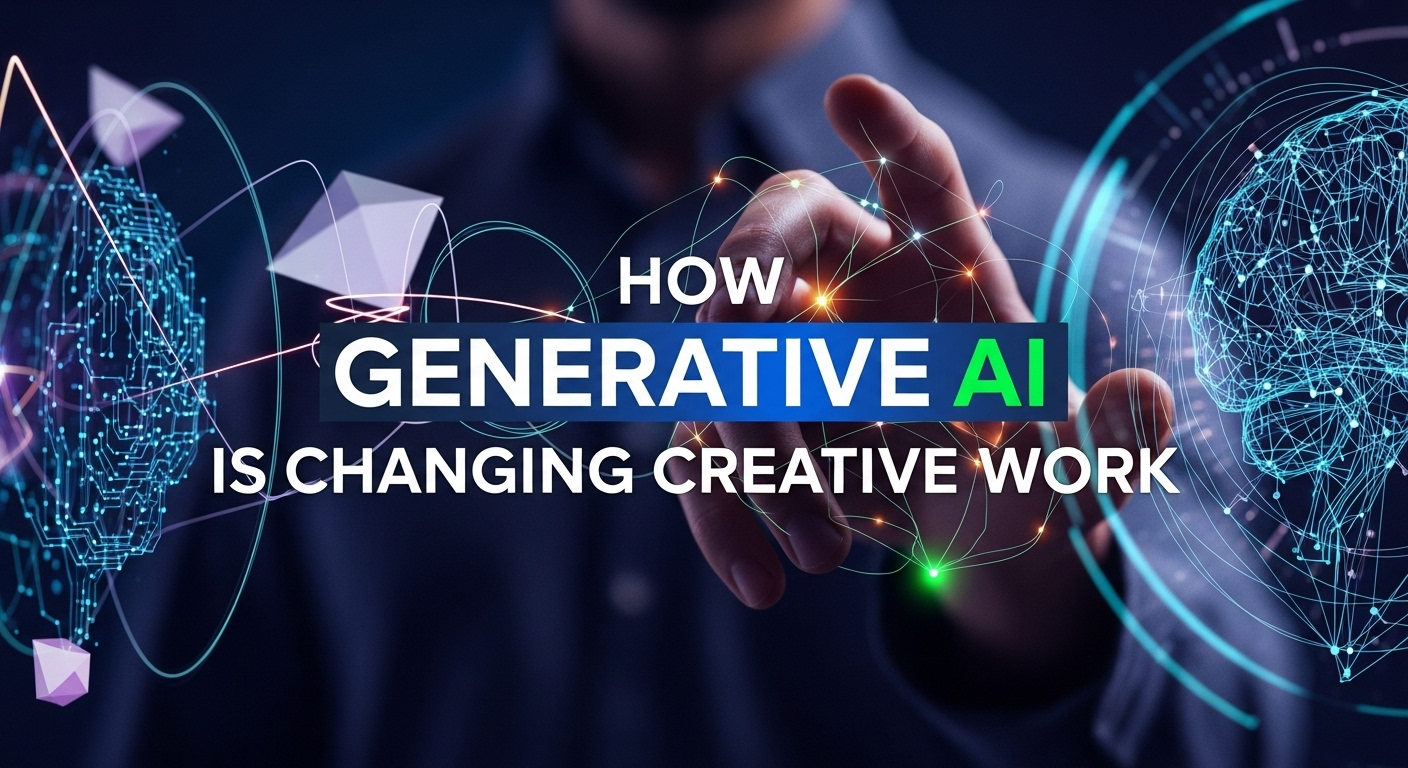
The creative industry is undergoing a massive transformation, and at the center of it all is Generative Artificial Intelligence (AI). Whether it’s writing stories, designing visuals, producing music, or generating video content, AI tools like ChatGPT, DALL·E, and Midjourney are changing the way creators work. Instead of replacing creativity, AI is becoming a powerful partner that helps humans imagine and innovate faster.
Generative AI refers to technology capable of creating new content — such as text, art, code, or sound — using existing data to learn patterns.
Unlike traditional AI that only analyzes data, generative AI produces fresh, original results. It’s built on machine learning models like transformers and neural networks, which allow it to generate realistic, human-like outputs.
Gone are the days when creativity was purely human. Now, AI acts as a collaborative assistant in every creative field:
🎨 Artists use AI to generate visual ideas and styles.
✍️ Writers use tools like ChatGPT for brainstorming and drafting.
🎵 Musicians create beats, lyrics, and compositions with AI-generated inspiration.
This partnership saves time, enhances creativity, and allows individuals to focus on storytelling and emotional depth while AI handles the technical parts.
Generative AI is revolutionizing various creative industries:
Marketing & Advertising: AI can instantly design logos, create ad copy, and generate personalized visuals.
Fashion Design: Designers are using AI to predict trends, generate clothing prototypes, and personalize collections.
Film & Entertainment: AI helps write scripts, generate characters, and even create digital actors.
Education & Content Creation: Teachers and students use AI to visualize complex concepts through creative storytelling and visuals.
The result is a faster, smarter, and more inclusive creative process.
While AI boosts creativity, it also raises concerns. Who owns AI-generated art? Can machines truly replicate human emotion?
Ethical questions around authorship, originality, and bias are growing. However, the human element — empathy, intuition, and cultural understanding — remains irreplaceable. AI can assist, but humans give meaning to creation.
The future isn’t about humans versus AI — it’s about humans working with AI.
As AI tools evolve, new creative roles are emerging such as Prompt Engineers, AI Curators, and AI Art Directors. These professionals will guide AI tools with human insight and vision. The creative industry of tomorrow will thrive on collaboration, not competition.
Generative AI is expanding the limits of creativity. It allows everyone — from professional designers to beginners — to turn ideas into reality faster and more efficiently. The goal isn’t to replace human imagination but to enhance it. As we move into the future, creativity will be defined by the perfect balance between human emotion and artificial intelligence.

Share This News